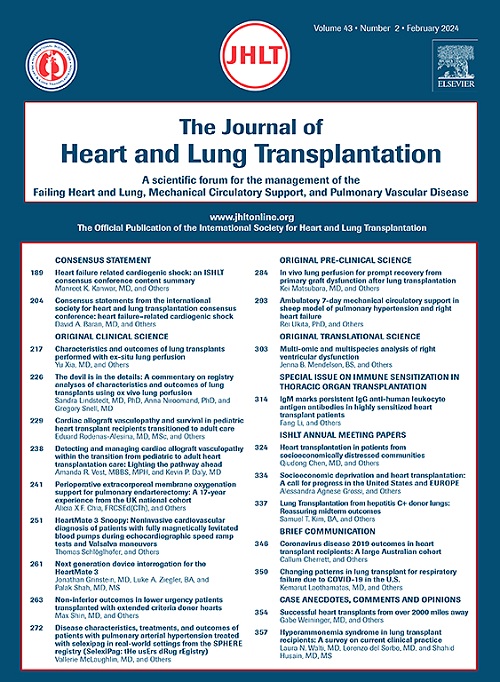Diagnosis of chronic thromboembolic pulmonary hypertension
IF 6
1区 医学
Q1 CARDIAC & CARDIOVASCULAR SYSTEMS
引用次数: 0
Abstract
Chronic thromboembolic pulmonary hypertension (CTEPH) is a severe complication of acute pulmonary embolism (PE), affecting approximately 2.7% of PE survivors. CTEPH results from persistent obstruction of the proximal pulmonary arteries by organized fibrotic clots, in combination with a secondary microvasculopathy, leading to increased pulmonary vascular resistance and progressive right heart failure. The mechanisms precluding a complete resolution of PE are not yet fully understood and include chronic inflammation, impaired fibrinolysis and coagulation abnormalities. Chronic thromboembolic pulmonary disease is the broader term for symptomatic patients with mismatched perfusion defects and signs of chronic thrombi on pulmonary vascular imaging, after at least 3 months of therapeutic anticoagulation, with CTEPH specifically referring to those with pulmonary hypertension. In patients with persistent dyspnea after PE or with PH, the diagnosis of CTEPH is suspected when ventilation/perfusion lung scan shows mismatched perfusion defects and is confirmed by comprehensive right heart catheterization and imaging with CT pulmonary angiography and/or digital subtraction angiography, which ought to be performed at centers with CTEPH expertise. Indeed, early referral to expert centers with experienced multidisciplinary teams ensures accurate diagnosis and tailored treatment, ultimately improving outcomes for CTEPH patients.
慢性血栓栓塞性肺动脉高压的诊断
慢性血栓栓塞性肺动脉高压(CTEPH)是急性肺栓塞(PE)的严重并发症,影响约2.7%的PE幸存者。CTEPH是由有组织的纤维化血块对肺动脉近端持续阻塞引起的,并伴有继发性微血管病变,导致肺血管阻力增加和进行性右心衰。排除PE完全解决的机制尚不完全清楚,包括慢性炎症,纤维蛋白溶解受损和凝血异常。慢性血栓栓塞性肺病是指有症状的患者,在抗凝治疗至少3个月后,在肺血管成像上有不匹配的灌注缺陷和慢性血栓迹象,其中CTEPH特指肺动脉高压患者。对于PE后持续呼吸困难或伴有PH的患者,当通气/灌注肺扫描显示不匹配的灌注缺陷时,怀疑CTEPH的诊断,并通过全面的右心导管穿刺和CT肺血管造影和/或数字减影血管造影证实,这应该在具有CTEPH专业知识的中心进行。事实上,早期转诊到拥有经验丰富的多学科团队的专家中心可以确保准确的诊断和量身定制的治疗,最终改善CTEPH患者的预后。
本文章由计算机程序翻译,如有差异,请以英文原文为准。
求助全文
约1分钟内获得全文
求助全文
来源期刊
CiteScore
10.10
自引率
6.70%
发文量
1667
审稿时长
69 days
期刊介绍:
The Journal of Heart and Lung Transplantation, the official publication of the International Society for Heart and Lung Transplantation, brings readers essential scholarly and timely information in the field of cardio-pulmonary transplantation, mechanical and biological support of the failing heart, advanced lung disease (including pulmonary vascular disease) and cell replacement therapy. Importantly, the journal also serves as a medium of communication of pre-clinical sciences in all these rapidly expanding areas.

 求助内容:
求助内容: 应助结果提醒方式:
应助结果提醒方式:


